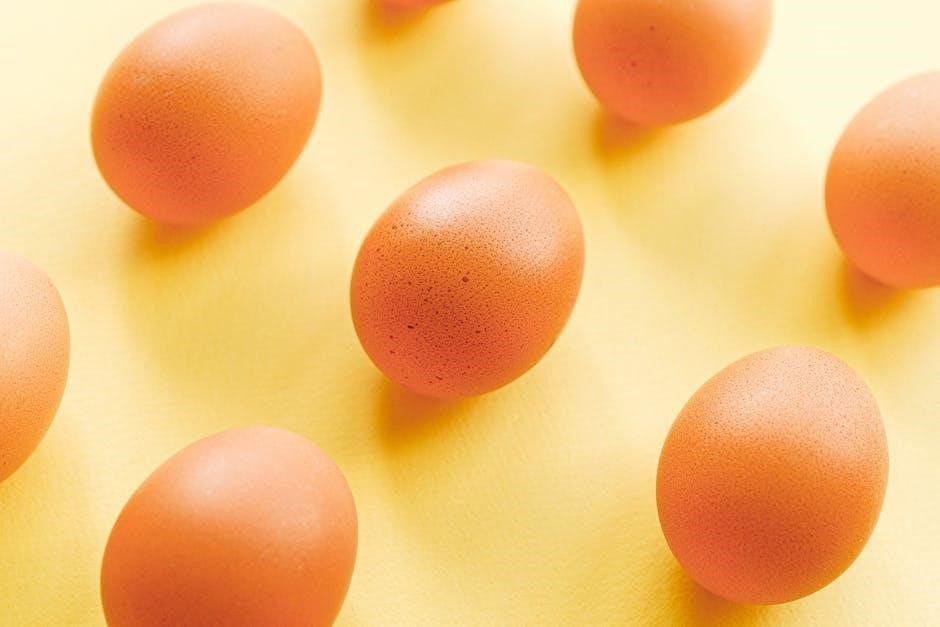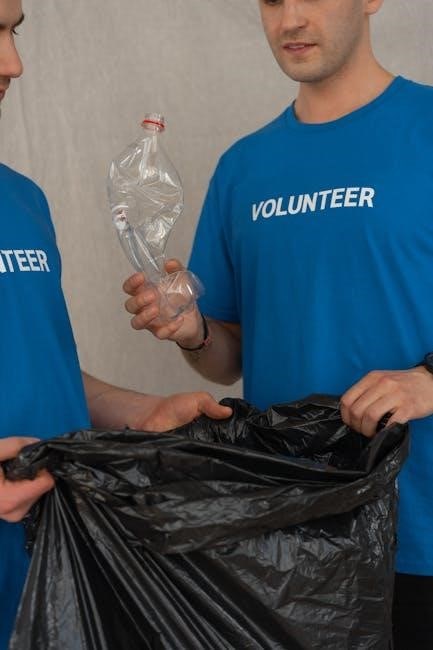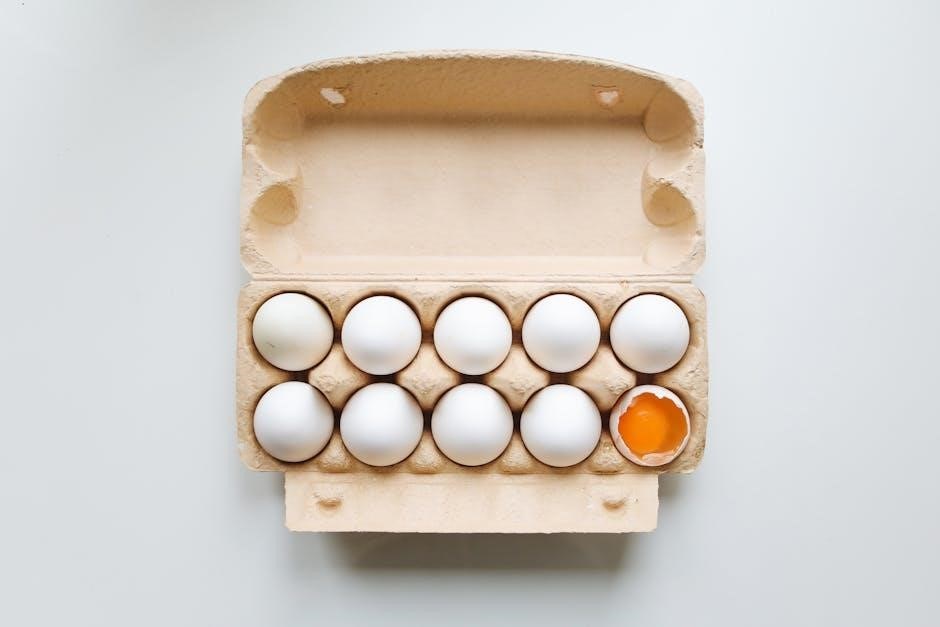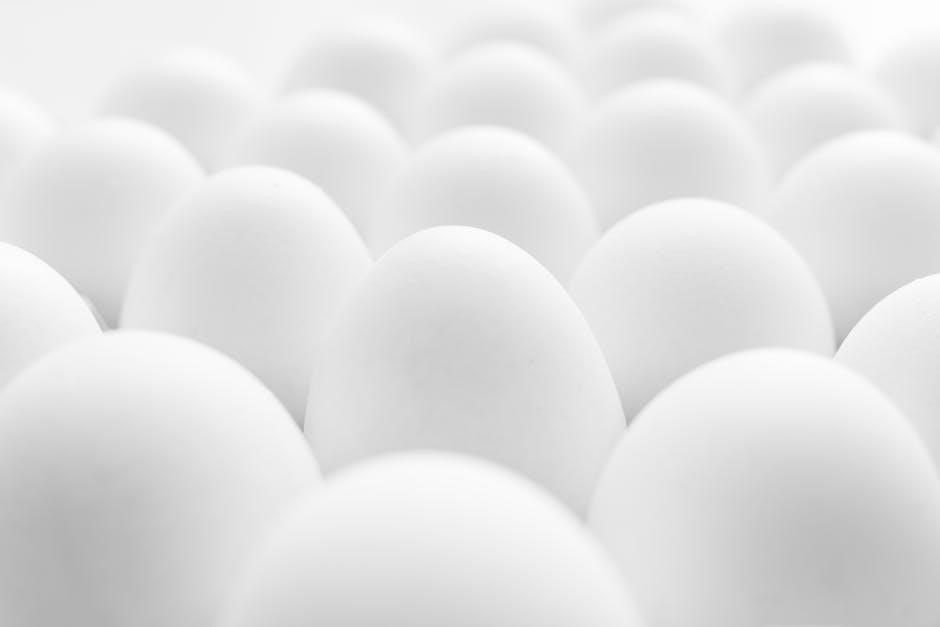The Clean 15 and Dirty Dozen lists, created by the Environmental Working Group (EWG), highlight fruits and vegetables with the highest and lowest pesticide residues, helping consumers make informed choices about organic and conventional produce annually.
1.1 Overview of the EWG Shoppers Guide to Pesticides in Produce
The EWG Shoppers Guide to Pesticides in Produce provides consumers with a yearly ranking of fruits and vegetables based on pesticide residue levels. By analyzing over 45,000 produce samples, the guide identifies the Dirty Dozen, items with the highest pesticide contamination, and the Clean 15, those with the lowest residues. This resource helps shoppers make informed decisions about buying organic or conventional produce, reducing pesticide exposure while balancing budgets.
1.2 Importance of Understanding Pesticide Residues in Fruits and Vegetables
Understanding pesticide residues is crucial for minimizing exposure to harmful chemicals. Pesticides, even in trace amounts, can pose health risks, especially for children and vulnerable populations. By identifying produce with high or low residues, shoppers can prioritize organic purchases for contaminated items and safely opt for conventional options when pesticide levels are minimal. This knowledge empowers consumers to balance health, budget, and environmental impact effectively.
The Dirty Dozen: Fruits and Vegetables with the Highest Pesticide Residues
The Dirty Dozen, updated annually by the EWG, lists produce with the highest pesticide residues, such as strawberries, spinach, and grapes, emphasizing the need to buy organic.
2.1 2024 Dirty Dozen List
The 2024 Dirty Dozen list, compiled by the EWG, identifies produce with the highest pesticide residues. This year, the top items include strawberries, spinach, kale, grapes, peaches, pears, nectarines, apples, bell and hot peppers, cherries, blueberries, and green beans. These fruits and vegetables are likely to contain multiple pesticide residues, emphasizing the importance of buying organic options when possible to reduce exposure to harmful chemicals.
- Strawberries
- Spinach
- Kale, collard, and mustard greens
- Grapes
- Peaches
- Pears
- Nectarines
- Apples
- Bell and hot peppers
- Cherries
- Blueberries
- Green beans
2.2 Key Findings: Fruits and Vegetables to Buy Organic
The 2024 Dirty Dozen list underscores the importance of choosing organic for certain produce to minimize pesticide exposure. Strawberries, spinach, and kale top the list, showing high residue levels. Grapes, peaches, and nectarines also rank highly, while apples and pears consistently appear due to their thin skin. Buying organic for these items can significantly reduce pesticide intake, promoting a healthier diet and safer consumption for families and individuals alike.
The Clean 15: Fruits and Vegetables with the Lowest Pesticide Residues
The Clean 15 lists produce with the lowest pesticide residues, such as avocados, sweet corn, and pineapple, making them safe to buy conventionally and reducing exposure to chemicals.
3.1 2024 Clean 15 List
The 2024 Clean 15 list, compiled by the EWG, identifies fruits and vegetables with the lowest pesticide residues. Topping the list are avocados, sweet corn, pineapple, and onions, followed by papaya, sweet peas, asparagus, honeydew melon, kiwi, and cabbage. These items are considered safe to buy conventionally, as they show minimal traces of pesticides, making them a healthier and cost-effective choice for consumers aiming to reduce their exposure to harmful chemicals.
3.2 Key Findings: Fruits and Vegetables Safe to Buy Conventional
The Clean 15 list highlights produce with minimal pesticide residues, making them safe to purchase conventionally. Avocados, sweet corn, pineapple, and onions top the list, showing negligible contamination. Papaya, sweet peas, asparagus, honeydew melon, kiwi, and cabbage also rank high. These items offer a cost-effective, healthier choice, reducing exposure to harmful chemicals without the need for organic options, based on EWG’s annual analysis of pesticide residue data.

Comparison of the Dirty Dozen and Clean 15
The Dirty Dozen lists fruits and vegetables with the highest pesticide residues, urging consumers to buy organic, while the Clean 15 highlights produce with minimal residues, safe to buy conventional.
4.1 How the Lists Differ
The Dirty Dozen and Clean 15 differ significantly in their pesticide residue levels. The Dirty Dozen includes produce with high pesticide contamination, emphasizing the need to choose organic options to reduce exposure. In contrast, the Clean 15 features fruits and vegetables with minimal pesticide residues, making them safer to consume conventionally. This distinction helps consumers prioritize their shopping choices effectively, balancing health and budget considerations.
4.2 Why the Lists Change Annually
The Dirty Dozen and Clean 15 lists are updated yearly due to varying pesticide usage, farming practices, and environmental factors. Each year, the EWG analyzes new data from thousands of produce samples, reflecting changes in residue levels. This annual update ensures consumers receive the most current guidance, helping them make informed decisions about their produce choices and reducing exposure to harmful pesticides effectively.

How the EWG Determines the Lists
The EWG analyzes over 45,000 produce samples annually, testing for pesticide residues and ranking fruits and vegetables to determine their placement on the Dirty Dozen and Clean 15 lists.
5.1 Methodology: Testing and Analysis of Produce Samples
The EWG’s methodology involves testing thousands of produce samples for pesticide residues. They analyze data from the USDA, focusing on residue levels, detection frequency, and average concentrations. Produce is ranked based on these factors, with the highest contamination earning a spot on the Dirty Dozen, while the cleanest options make the Clean 15 list. This process ensures transparency and helps consumers make informed decisions.
5.2 Criteria for Ranking Fruits and Vegetables
The EWG ranks produce based on pesticide residue levels, detection frequency, and average concentration. Produce with higher residues and more frequent detection are placed on the Dirty Dozen, while those with lower residues and less detection are on the Clean 15. This criteria helps consumers prioritize organic purchases for heavily contaminated items and safely choose conventional for cleaner options, promoting healthier diets and cost-effective shopping.
Benefits of Using the Dirty Dozen and Clean 15 Lists
The lists help consumers make healthier choices by reducing pesticide exposure and saving money. They guide when to buy organic or opt for conventional produce safely.
6.1 Making HealthierChoices for You and Your Family
Using the Dirty Dozen and Clean 15 lists helps prioritize healthier choices by minimizing pesticide exposure. These guides empower families to select organic options for high-pesticide produce and safely choose conventional for cleaner items. By aligning purchasing decisions with these rankings, consumers can reduce chemical intake, particularly for children and sensitive individuals; Regular updates ensure the information remains relevant, aiding in informed decisions for a safer and healthier diet.
6.2 Saving Money by Knowing When to Buy Organic
Understanding the Dirty Dozen and Clean 15 lists helps consumers save money by identifying when organic purchases are necessary. By opting for conventional produce from the Clean 15, which has lower pesticide residues, families can reduce their grocery bills. Conversely, buying organic for items on the Dirty Dozen minimizes pesticide exposure without unnecessary spending on cleaner conventional options. This balanced approach enables cost-effective, healthier choices for everyday meals.
Limitations of the Lists
The Dirty Dozen and Clean 15 lists have limitations, including annual updates, potential misinterpretations about pesticide risks, and the fact that they don’t cover every fruit or vegetable.
7.1 Potential Drawbacks and Misinterpretations
The lists may be misinterpreted as implying non-organic produce is unsafe, causing unnecessary alarm. They also don’t account for portion size or overall diet, potentially leading to overgeneralized avoidance of certain fruits and vegetables. Additionally, the annual updates can confuse consumers, and the focus solely on pesticide residues overlooks other environmental and health factors. This narrow scope might not provide a complete picture for informed decision-making.
7.2 The Role of pesticides in Modern Agriculture
Pesticides play a critical role in modern agriculture by protecting crops from pests, diseases, and weeds, ensuring higher yields and food security. They help maintain crop health and prevent losses, enabling farmers to meet growing food demands. However, their use must be balanced with environmental and health concerns, as excessive pesticide application can harm ecosystems and human health, highlighting the need for sustainable practices and responsible use.

How to Use the Lists in Your Daily Life
- Check the Dirty Dozen and Clean 15 lists before shopping to make informed choices.
- Prioritize buying organic for Dirty Dozen items to reduce pesticide exposure.
- Opt for conventional produce from the Clean 15 to save money without compromising safety.
- Refer to downloadable guides for easy access while grocery shopping.
8.1 Practical Tips for Shopping and Cooking
Use the Dirty Dozen and Clean 15 lists to guide your shopping decisions. Prioritize buying organic for items on the Dirty Dozen, like strawberries and spinach, to minimize pesticide exposure. Opt for conventional produce from the Clean 15, such as avocados and sweet corn, to save money without compromising safety. Reference downloadable guides for easy access while shopping, and always wash produce thoroughly before cooking to reduce residue levels further.
8.2 Downloadable Guides for Easy Reference
The EWG offers downloadable versions of the Dirty Dozen and Clean 15 lists, available on their website. These guides are designed for easy reference while shopping, allowing consumers to quickly identify which fruits and vegetables to buy organic or conventional. Printable and shareable, they provide a convenient way to make informed decisions about pesticide exposure and budgeting for healthier choices year-round.
The Environmental Impact of Pesticide Use
Pesticide use can harm ecosystems, contaminate water sources, degrade soil quality, and threaten biodiversity. Reducing pesticide exposure through informed choices supports sustainable agriculture and environmental conservation.
9.1 How Pesticides Affect Ecosystems
Pesticides can disrupt ecosystems by contaminating soil, water, and air, harming non-target species like pollinators and wildlife. Their overuse leads to biodiversity loss, soil degradation, and the development of pesticide-resistant pests, further threatening agricultural sustainability and ecological balance. Reducing pesticide reliance through informed consumer choices, as guided by the Clean 15 and Dirty Dozen lists, supports healthier ecosystems and sustainable farming practices.
9.2 The Role of Consumer Choices in Reducing Pesticide Use
Consumer preferences significantly influence pesticide use. By choosing organic options for the Dirty Dozen and opting for conventional Clean 15 produce, shoppers reduce demand for heavily treated crops. This shift encourages farmers to adopt cleaner practices, decreases chemical use, and supports sustainable agriculture. Awareness and informed decisions empower individuals to drive environmental and health-positive changes in the food industry, fostering a safer and more sustainable food system.

Public Health Implications
Pesticide exposure is linked to various health risks, making awareness and education crucial for safer food choices and reducing dietary pesticide intake.
10.1 The Link Between Pesticide Exposure and Health Risks
Pesticide exposure has been linked to various health risks, including cancer, neurological damage, and reproductive issues. The Clean 15 and Dirty Dozen lists help consumers minimize exposure by identifying produce with lower or higher pesticide residues, promoting safer dietary choices and reducing potential long-term health impacts from pesticide ingestion.
10.2 The Importance of Awareness and Education
Awareness and education about pesticide residues are crucial for making informed decisions about produce. By understanding the Clean 15 and Dirty Dozen lists, consumers can prioritize their purchases, reducing exposure to harmful pesticides. Education empowers individuals to make healthier choices, fostering a safer diet and encouraging sustainable agricultural practices. Staying informed about annual updates ensures consumers remain proactive in protecting their health and the environment.
The Clean 15 and Dirty Dozen lists provide valuable insights into pesticide residues, helping consumers make informed choices for a healthier diet and reducing environmental impact annually.
11.1 Summary of Key Points
The Clean 15 and Dirty Dozen lists, developed by the EWG, rank fruits and vegetables by pesticide residues. The Dirty Dozen highlights produce with the highest residues, encouraging organic purchases, while the Clean 15 identifies options with minimal residues, allowing consumers to buy conventional. These lists empower individuals to make informed choices, reducing pesticide exposure and promoting environmental health. Annual updates ensure relevance, aiding consumers in prioritizing their shopping decisions effectively.
11.2 Encouragement to Use the Clean 15 and Dirty Dozen Lists
Embracing the Clean 15 and Dirty Dozen lists is a simple yet impactful way to prioritize health and sustainability. By choosing organic for the Dirty Dozen and opting for conventional Clean 15 items, consumers can reduce pesticide exposure while making eco-conscious decisions. These lists empower individuals to shop smarter, protecting both their families and the environment. Start using the EWG’s guides today to make informed, healthier choices that align with your values and budget.
